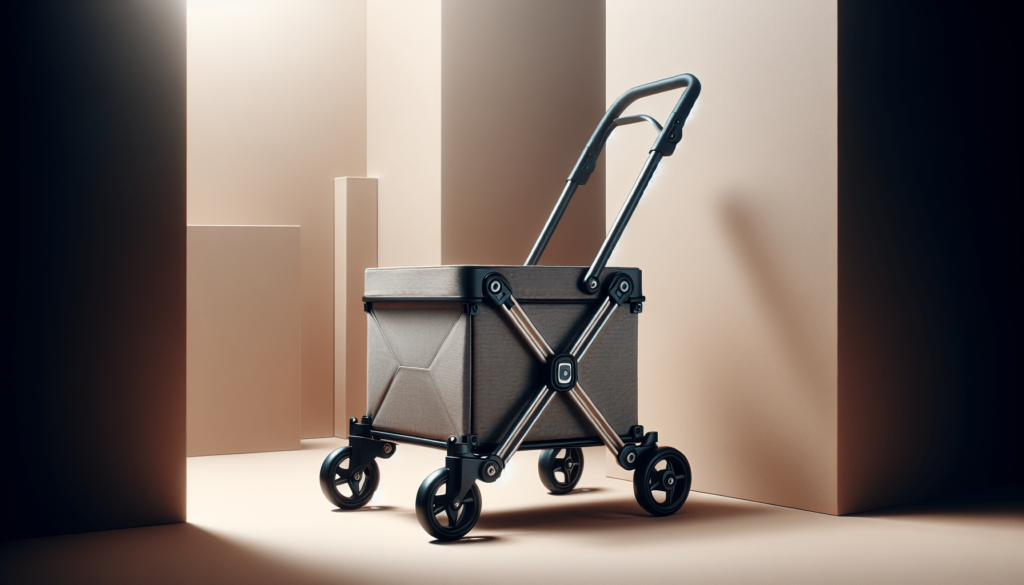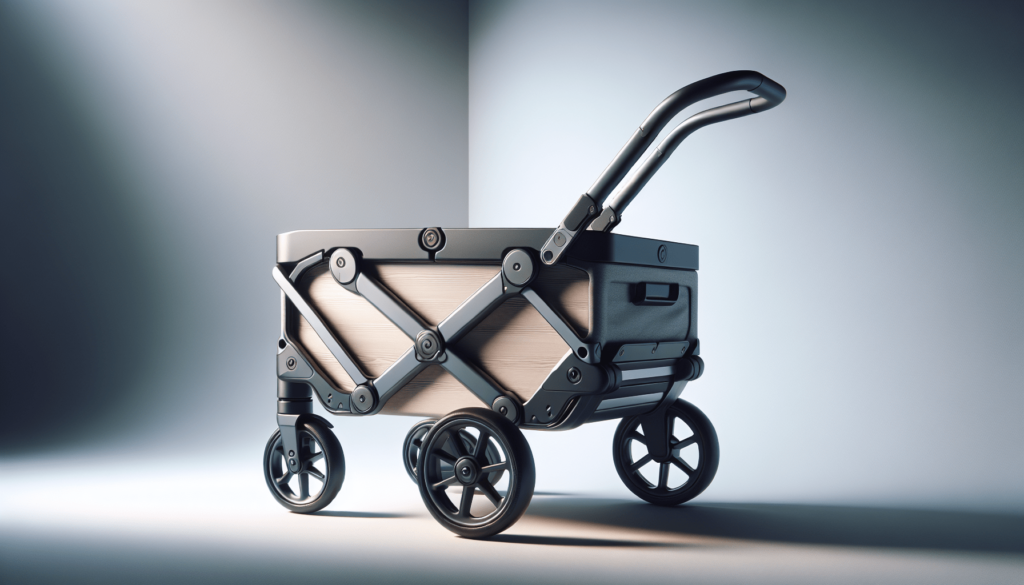Have you ever wondered what makes foldable wagons so convenient and versatile? It’s fascinating how these simple yet ingenious tools have made transporting items easier for so many people—whether you’re heading to the beach, a park, or a sporting event. Let’s take a closer look at the mechanics and design principles behind these practical companions.

Understanding the Basics of Foldable Wagons
Foldable wagons, often called collapsible carts, combine utility with innovation. They are designed for easy transportation of various items, from beach gear to groceries. The key to their popularity lies in their ability to fold up for compact storage and transport, making them a favorite among families, outdoor enthusiasts, and anyone in need of a little more space to carry their burdens.
The Utility of Foldable Wagons
At first glance, you might not think about how essential foldable wagons can be. Imagine loading up for a day at the park—there’s sunscreen, snacks, blankets, and maybe even a kite. Having a foldable wagon allows you to consolidate all those items into one easy-to-manage unit rather than juggling bags and boxes. This type of wagon meets a wide range of needs and fits into the lifestyles of many users.
Types of Foldable Wagons
When it comes to foldable wagons, there are several varieties each designed with specific features. Here’s a brief overview:
| Type | Description |
|---|---|
| Standard Wagons | Typically made with a metal or plastic frame, these are stable and offer good weight capacity. |
| Beach Wagons | Usually made from rust-resistant materials with larger wheels for smooth sand navigation. |
| Garden Carts | Built for heavier loads, these carts often come with specialized features such as tool holders. |
| Utility Carts | Multi-purpose wagons often designed for heavy-duty tasks; may include additional compartments. |
| Toy Wagons | Lightweight and small, perfect for children to use for play; often designed with fun colors. |
Each type has its unique design features tailored to different environments and tasks.
The Anatomy of a Foldable Wagon
To understand how foldable wagons function, it’s important to dissect their components. Essential parts include the frame, wheels, fabric, handle, and any additional accessories.
Frame
The frame is the backbone of any foldable wagon, providing stability and support. Most frames are made of lightweight yet durable materials such as aluminum or steel. This design ensures that the wagon can carry substantial weight without compromising structural integrity. The folding mechanism typically involves hinges, allowing the wagon to collapse flat.
Wheels
Wheels are critical for maneuverability. The design, size, and material affect how easy it is to pull the wagon across various terrains. Larger wheels, often inflatable or made of rubber, are better for rough surfaces, such as sand or gravel, while smaller wheels are ideal for smooth pathways.
Fabric
The fabric used for the cargo area is often water-resistant and easy to clean. Polyester or nylon are common choices, providing durability without adding significant weight. Some wagons feature removable fabric, making it easier to wash or replace, extending the wagon’s lifespan.
Handle
An adjustable handle enhances the user experience by accommodating different heights and preferences. The handle can be constructed with foam or rubber grips for comfort during long treks.
Foldability: The Mechanism of Convenience
You might think that folding a wagon is a simple process, but the mechanics involved have been meticulously designed to ensure ease of use and efficiency. The folding mechanism typically consists of a series of latches, hinges, and collapsible joints.
Common Folding Mechanisms
Here are a few common types of folding mechanisms:
| Mechanism | Description |
|---|---|
| Central Folding | This type allows the wagon to fold in half, reducing its length. |
| Crossover Folding | The sides fold inwards toward the center, compacting the width. |
| Z-Fold | Offers a zig-zag design for a more compact final form. |
Each mechanism has its pros and cons, which come into play depending on how much space you have for storage or how quickly you need to set up.
The Role of Durability
Durability is a crucial consideration for foldable wagons. You want a product that stands up to wear and tear over time, especially if you plan to use it for outdoor excursions. Materials should be chosen carefully to resist abrasions, corrosion, and sun damage.

Design Considerations: Aesthetic Meets Functionality
While functionality is vital, the design of a foldable wagon can greatly influence its market appeal. Modern consumers often look for aesthetically pleasing products that also offer practicality.
Color and Style
Color selection can attract a wide audience. Bright colors may appeal to families, while more subdued tones may catch the eyes of adults looking for utility. The inclusion of patterns, unique shapes, or branding opportunities can also enhance the aesthetic appeal.
User-Friendly Design
A design that considers user-friendliness can make a significant difference in the overall experience. Features such as easy-to-grip handles, intuitive folding mechanisms, and simple assembly processes can improve usability. Manufacturers often receive feedback from consumers to guide updates and improvements in design.
Feature-Rich Options
As competition increases in the foldable wagon market, manufacturers are adding extra features to attract customers. Here’s a look at some popular additions you might find:
Storage Compartments
Some wagons incorporate storage compartments, enabling you to organize items better. These compartments can be ideal for keeping small items like water bottles or books separate from larger cargo.
Adjustable Canopies
An adjustable canopy can provide shade on sunny days, protecting both people and cargo from harmful UV rays. Canopies with additional features, such as UV protection or water resistance, can enhance functionality.
All-Terrain Wheels
Wagons designed with all-terrain wheels are capable of traversing various surfaces, making them excellent for outdoor use—whether it’s gravel roads, sand, or lush grass.
How to Choose the Right Foldable Wagon
Selecting the ideal foldable wagon can feel overwhelming due to the numerous options available. However, there are a few key factors you should keep in mind to ensure that your choice serves your specific needs effectively.
Load Capacity
First, consider how much weight you plan to transport. Each wagon comes with a designated load capacity, and it’s essential to choose one that can handle your expected use. For example, if you’re taking it to the beach with several adults, opt for a higher capacity wagon.
Size and Dimensions
You’ll want to think about how much space you have for the wagon, both when it’s in use and when it’s folded as well. Measure the area in your vehicle, garage, or storage area to choose a wagon that fits well without taking up unnecessary space.
Portability
Consider how easy it is to transport the wagon. Some models feature carrying cases, making it easier to pack along, while others come with built-in handles for easy lifting. Your choice may depend on how far you often need to carry it.
Customer Reviews
Always a solid resource for real-world performance feedback, customer reviews can provide insights about a wagon’s durability and usability. Checking reviews before making a purchase can help you avoid potential disappointments.
Maintenance and Care
Taking care of your foldable wagon can significantly extend its lifespan, ensuring you get the most value from your purchase.
Regular Cleaning
After any outings, it’s wise to wipe down the fabric and frame. Any wet or sandy materials can easily cause wear over time, so a soft cloth or sponge will suffice for routine cleaning. You can use mild soap if necessary.
Storage
When storing your wagon, ensure it is completely dry to prevent mold or mildew. Finding a dry, indoor area is ideal. If you’re leaving it outdoors, consider a cover to protect it from the elements.
Inspect for Damage
Occasionally inspect your wagon for any signs of wear, especially after heavy use. Check the wheels for brittleness or cracks, inspect the frame for bends, and make sure the fabric is intact. Catching these issues early on can save you from larger repairs later.
The Future of Foldable Wagons
As we look to the future, it’s clear that technological advancements can play a significant role in the evolution of foldable wagons. Models equipped with smart technology, like GPS tracking or integrated Bluetooth speakers, could offer added value for consumers.
Eco-Friendly Materials
The demand for sustainable products is growing, and many manufacturers are focusing on eco-friendly materials. Using recycled or biodegradable resources not only helps the environment but also appeals to a market increasingly concerned with sustainability.
Customization Options
In the future, you might see more customization options, allowing buyers to add their flair or features tailored specifically to their lifestyle. Imagine selecting the color, adding unique pockets, or designing the perfect accessory setup!
Conclusion: The Value of Foldable Wagons
Whether you’re a parent with kids to transport, an outdoor enthusiast, or simply someone who enjoys convenience, foldable wagons provide a remarkable solution to carrying your belongings. Their ability to fold for compact storage, combined with various designs, customizable options, and user-friendly features, have made them a valuable addition to many households.
As you consider acquiring one or simply marvel at their design, recognize the thoughtfulness that goes into the mechanics of foldable wagons. You are engaging with a small but significant part of the design world, where practicality meets innovation, creating products that enrich our lives in remarkably simple yet profound ways.

